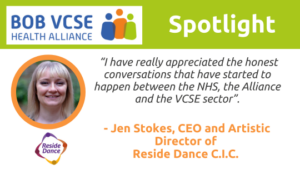
What does VCSE mean?
VCSE stands for voluntary, community and social enterprise sector. It has also been called the third sector, the charity sector or civil society in different times and contexts.
Some may know it as the VCS meaning the voluntary and community sector; social enterprise is a term that’s become better known recently, hence the NHS now calls it the VCSE.
In the NHS, you may also hear PIVO which stands for Private, Independent and Voluntary Organisations, which includes for-profit as well as non-profit organisations.
What is the VCSE sector?
The local voluntary, community and social enterprise sector (VCSE) is a ‘home-grown’ resource, formed of many organisations and groups which were set up to tackle a wide range of local social, environmental and economic issues.
As independent-minded and autonomous entities, VCSE organisations decide what their objectives should be, garner the resources to get things done, develop and use working practices that suit them best and develop relationships with other organisations as and when this helps them to achieve their aims.
How do we serve our people and communities?
The main population groups we work with in the VCSE:
- People with physical disabilities
- People or households living in poverty
- People with long-term health conditions
- People in rural areas
- People with mental health conditions
- People with learning disabilities
Many VCSE organisations were built up with as well as for people who need support and assist people in the context of their families and communities: we call this co-production..
Member Spotlights
What is our impact?
The top five areas in which VCSE organisations report that they make a strong impact are:
- We give people the confidence to manage their lives
- We enhance the cultural and artistic life of the community
- We improve health and wellbeing
- We reduce social isolation
- We empower people in the community
Our VCSE sector in the BOB ICS are strong on arts and culture and its services to our rural communities are significant..


